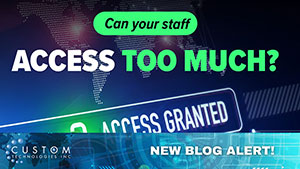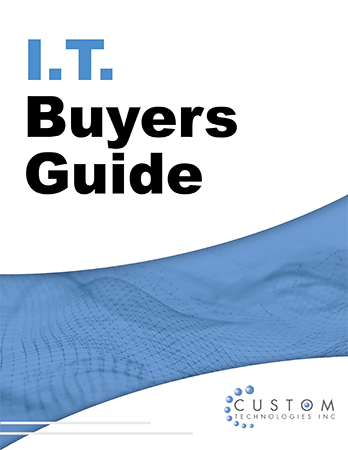
Why Metro Atlanta Business Owners Need to Audit Permissions Now
Let’s start with a critical question:
Do you know exactly who on your team has access to your most sensitive business data?
If your answer is anything less than “yes,” your company may be more vulnerable than you think.
New research shows that nearly 50% of employees have access to data they don’t need to do their jobs. While this might seem harmless, it creates a dangerous opening for data breaches, compliance failures, and insider threats.
Whether accidental or intentional, too much access can cost your business dearly.
What Is Insider Risk, and Why Should You Care?
Insider risk refers to any potential threat from someone within your organization — whether it’s an employee, contractor, or third-party vendor — who has access to your systems.
These risks come in two flavors:
- Malicious: A disgruntled employee steals client data.
- Unintentional: A well-meaning team member clicks on a phishing email or accidentally shares sensitive files.
Most insider threats aren’t criminal — they’re careless.
But the results are the same: data loss, legal issues, and damaged trust.
The Silent Threat: Privilege Creep
One of the most common access-related risks is something called privilege creep.
Here’s how it works:
- An employee changes roles or takes on extra responsibilities.
- They get access to new systems or tools — but no one removes the old ones.
- Over time, they accumulate far more access than necessary.
Now imagine dozens of employees with outdated or excessive permissions — and suddenly you’ve got a ticking time bomb.
Even worse? Nearly half of businesses admit that former employees still have access to their systems months after leaving.
That’s like handing your office keys to someone who doesn’t work there anymore.
Why “Least Privilege” Access Is the Smart Way Forward
To reduce risk and keep your business secure, you need to adopt a “least privilege” model.
This means:
✅ Giving employees access only to the data and tools they need
✅ Removing access the moment it’s no longer required
✅ Using “just-in-time” permissions for temporary needs
✅ Immediately offboarding credentials when someone leaves
By limiting access, you shrink your attack surface — which means fewer opportunities for breaches, whether from mistakes or bad actors.
Don’t Forget the Tools That Help
Today’s digital workplace — full of cloud apps, AI platforms, and “shadow IT” — makes managing access trickier. But with the right tools and policies, it’s completely manageable.
Here’s what we recommend for Metro Atlanta businesses:
🔐 Conduct quarterly access audits
🧾 Use centralized identity and access management (IAM) tools
⛔ Revoke old credentials immediately
🛠️ Automate provisioning and deprovisioning where possible
📈 Monitor and log access for compliance
Don’t Wait for a Breach to Find Out
Access mismanagement is one of the top causes of modern cyber incidents. And in a city like Metro Atlanta, where businesses are growing fast and regulations are getting tighter, this is a risk you can’t afford to ignore.
Let Custom Technologies help you tighten your access controls before it’s too late.
We’ll help you audit, simplify, and automate your user permissions — so you can stop guessing and start securing.
👉 Book a FREE Discovery Call Today
📞 770-792-6700
🔗 Schedule Your Consultation Now
Let us manage your network so you can manage your business.
🔍 FAQs: Employee Data Access and Insider Threats
What is "privilege creep" in cybersecurity?
Privilege creep happens when employees accumulate more access to systems or data over time than their current role requires. This often goes unnoticed and can create major security risks.
What’s the difference between insider risk and insider threat?
- Insider risk includes any potential harm from internal access, whether intentional or not.
- Insider threat typically refers to malicious behavior, like data theft or sabotage.
How do I know if my team has too much access?
Start by running an access control audit. Compare each employee’s current access against their job role. Remove or limit any permissions that aren’t necessary.
What tools can help reduce insider risk?
- Identity & Access Management (IAM) systems
- Multifactor Authentication (MFA)
- Automated provisioning tools
- Endpoint monitoring software
- Security awareness training
How often should I review employee access?
We recommend reviewing access at least once per quarter — or any time someone changes roles or leaves the company.



